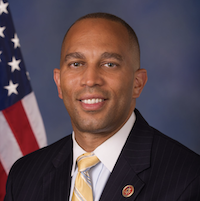Despite the infection, health officials note public health risks remain low and there has been no human-to-human transmission
Last week Ohio health officials reported their first case of bird flu in humans. The man is a Mercer County farm worker who “was in contact with deceased commercial poultry,” the Ohio Department of Health reported.
Since the beginning of 2024, there have been only 68 confirmed cases of bird flu in humans across the country, with one death, in Louisiana. Importantly, Ohio health officials note, there are no known incidents of human-to-human transmission.
“While the risk to Ohioans is low,” state Health Director Dr. Bruce Vanderhoff explained, “the best way to prevent bird flu is to avoid unprotected exposures to sick or dead birds or to their environment.
“People should avoid direct contact with poultry or wild birds and take proper precautions,” he added, “including reaching out for guidance regarding personal protection and safe handling, if you must be around sick or dead birds.”
State health officials recommend checking with the local health department or a local veterinarian before approaching sick or dead poultry and wild birds.
Ag precautions
Although health officials repeatedly stress that the threat to public health remains low, the virus’ impact on Ohio agriculture has been substantial. According to USDA data, from the beginning of this year Ohio leads all states in the number of poultry affected by the virus. At more than 10 million birds, it’s more than double the second largest bird flu population.
Mercer County alone accounted for more than 5.5 million of that total.
“Ohio is experiencing the largest outbreak of positive detections in commercial poultry to date which requires critical action from our department and our federal partners, to contain and prevent the spread of disease,” Ohio Department of Agriculture Director Brian Baldridge explained in the press release announcing Ohio’s first human infection.
Baldridge urged farmers to adopt best practices when it comes to “biosecurity.” Ag officials recommend the basics like washing hands before and after contact with poultry as well as cleaning and disinfecting equipment before using it at a different poultry facility. In the same vein, they recommend disposable boot covers.
Additionally, they emphasize reducing outside contact for flocks. The agriculture department urges farmers to minimize visitors and prevent contact with wild birds. They also make recommend establishing a rodent and pest control program.
Tropical depression
Mike Oglesbee heads up Ohio State University’s Infectious Diseases Institute and has a background in virology and veterinary pathology. He explained that avian flu flares up from time to time but what’s different now is the virus has jumped to cattle. Oglesbee said often those kinds of “spillover events” amount to a dead end, but cows appear to have passed the virus to pigs, cats, and even humans.
“So, the concern is the degree to which this is infecting a number of mammalian species,” he said. “Every time you get it into a new host, there’s a chance for a change that can give rise to a new virus that has potential to cause — well, pandemic is the worst-case scenario, but a new infectious disease challenge.”
Oglesbee agreed with health officials’ assessment that the current risk level is low. Borrowing a metaphor he came across recently, he compared the virus to a tropical weather system.
“So right now, it’d be like looking at a tropical depression in the South Atlantic,” he said. “It may just burn out, or it could flare up into a category five hurricane.”
His concern is less about the virus itself — he puts that at a five on a scale of 1 to 10 — and more about a lack of urgency in response. He argued that the experience of COVID-19 underscored the importance of preparation, and how much more difficult it is to operate in “reaction mode.”
“You know, we came out of that thinking we’ll know better next time,” he explained. “And I feel like we’re entering into a next-time scenario where you’re just seeing so much complacency, inaction, (and) pushback against surveillance.”
As an example, he pointed to one of their labson the Wooster campus. It’s a biosafety level three facility, which is a level of containment necessary to work on viruses like avian flu. What makes the facility special is it’s big enough to work with large livestock like cattle and pigs — emerging as possible mammals where the virus could mutate into a more transmissible or virulent pathogen.
Oglesbee said there are only a handful of facilities like it in the country, but the university is struggling to find the money to keep it open.
“It would be like I have that tropical depression in the South Atlantic,” he said, “and you know what? I’m going to withdraw funding for the Weather Service, and we’ll just see what happens.”
He acknowledged the difficulty of prioritizing precautionary measures, but for the time being, he stressed the importance of surveillance — tracking where the virus is and how it’s spreading.
If health officials document person-to-person transmission, though, he said the concern level “goes through the ceiling.”
• • •• • •
This story is provided by Ohio Capital Journal, a part of States Newsroom, a national 501(c)(3) nonprofit. See the original story here.















